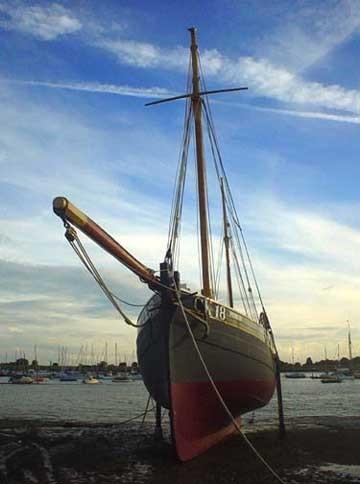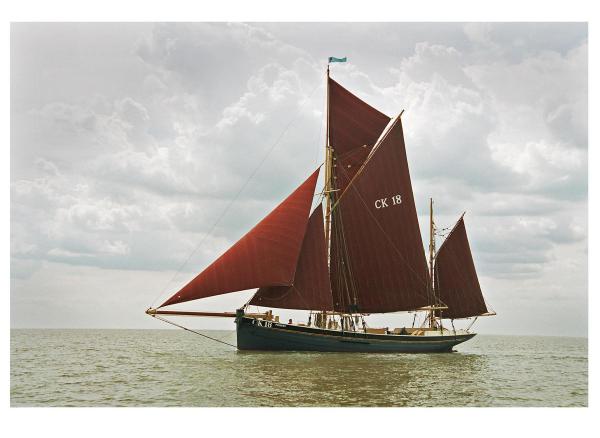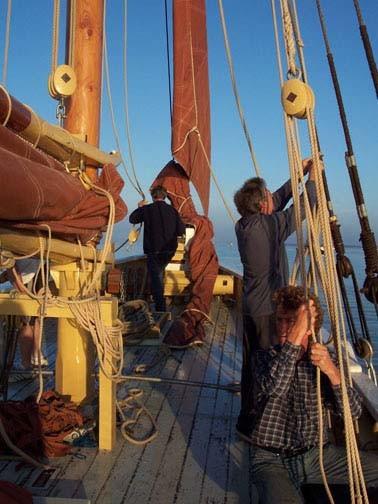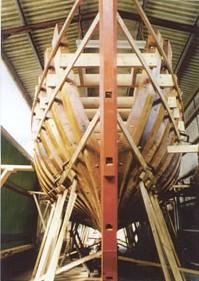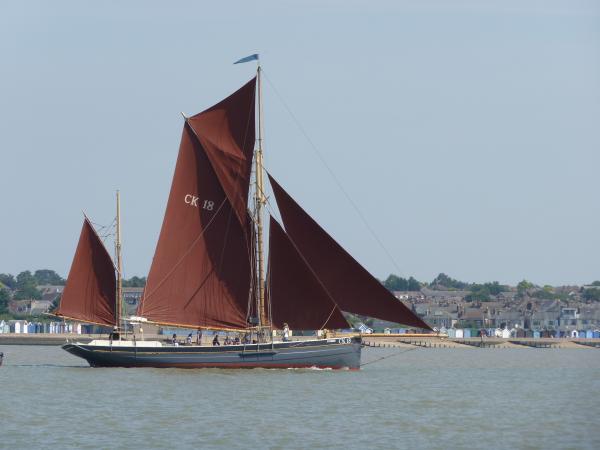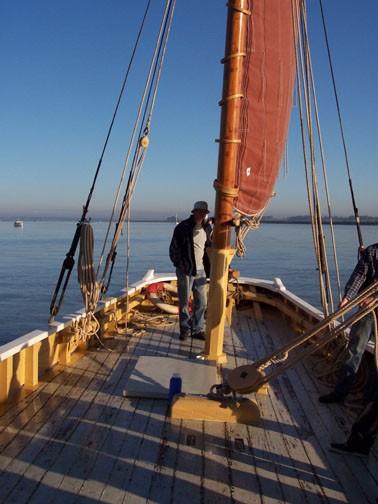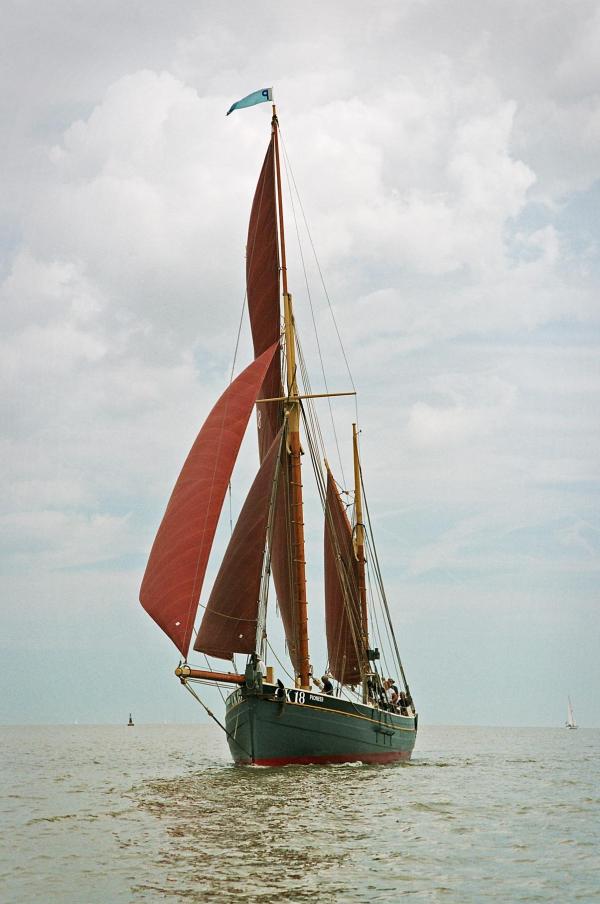

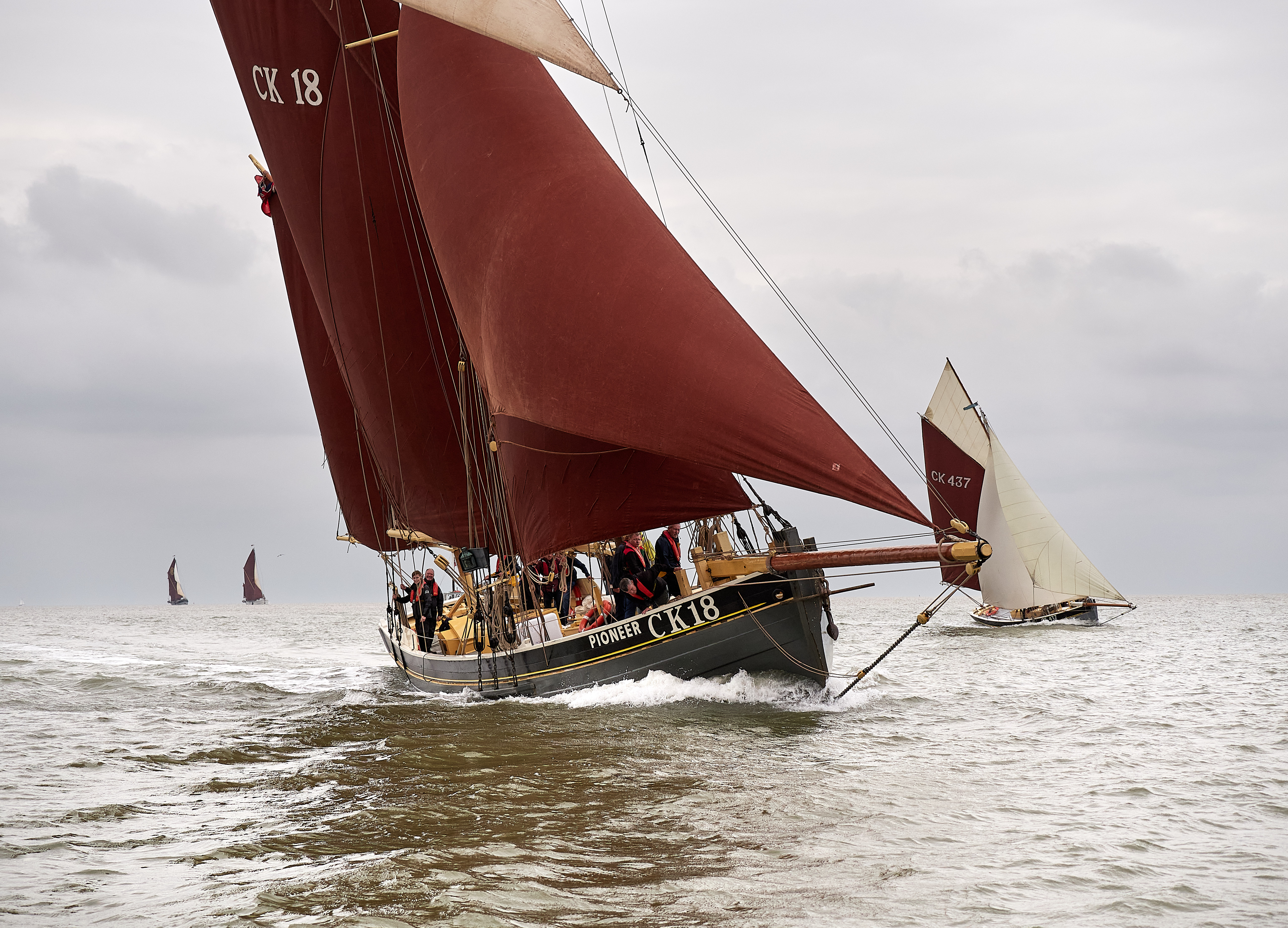
Details
Construction
Dimensions
History
PIONEER was built in 1864 by Peter Harris of East Donyland, Rowhedge, in Essex. She was commissioned by Charles Ford Bishop of Cowes, Isle of Wight; a master mariner who had an interest in the Colchester oyster dredging fleet which worked out of the River Colne in Essex. She is the only remaining example of a fleet of over one hundred sea smacks that dredged all around the British Isles, the French channel coast and as far north as Denmark, fishing for oysters and scallops. In 1889, during her fourth ownership, she was fitted with a wet well and lengthened to seventy feet by Robert Aldous' shipyard in Brightlingsea. This enabled her to travel further afield and, with a flooded well, to keep her catch alive indefinitely. As well as dredging for deep sea oysters and scallops, the welled smacks were able to bring back brood stock for the Colchester Fishery, which was unable to breed enough of its own due to the enormous London market it was supplying. PIONEER was based all her life at Brightlingsea, but she often worked further down channel on the scallop grounds, using such ports as Newhaven, Shoreham, Weymouth and Boulogne.
In 1925, PIONEER was fitted with a boiler and steam capstan and, four years later, a thirty-five horsepower engine was installed. Shortly afterwards, all her gear was lost in a fire at a store in Brightlingsea which put an end to her working life as it was not economical to replace it. By this time the fleet was also largely depleted as dredging was no longer very fruitful. The last registered owner was Thomas Poole of Brightlingsea, who brought her in 1921, and worked her up until 1929. After this she became a sailing club in East Mersea until 1942, when she was found to be blocking a land drain and so was moved to West Mersea where she became a house boat. Soon after this she broke her moorings and sank. In 1998, a group of enthusiasts started digging for her remains. A year later, The Pioneer Sailing Trust was formed and her restoration began. On 17 May 2003, she was re-launched with great ceremony at Brightlingsea. PIONEER'S restoration was completed in 2005 and she now operates as a sail training vessel. In early 2006, the Trust secured a piece of land on the bank of the River Colne, which they intended to develop as a permanent home for PIONEER and other local historic vessels awaiting restoration. In addition to a boat shed, it was also suggested that it could provide an exhibition/display facility. It is hoped this will lead to the retention of locally based specialist skills.
Key dates
-
1864
Built by Peter Harris of Rowhedge for work out of Brightlingsea dredging deep sea oysters
-
1889
Lengthened by 11ft by Aldous of Brightlingsea. Having a wet well fitted made it possible to work further a field, due to the fact she could now keep her catch alive. 'Wet wells' date back to the 1400s and this vessel is thought to be the last remaining
-
1890-1939
Working to begin with dredging deep-sea oysters off the North Holland coast, and later dredging scallops down channel, she would also sail around the British isles collecting brood stock for cultivating back on the Colne and Blackwater oyster layings<
-
1925
Steam capstan fitted for hauling the dredges. Up until then, this had been done by hand
-
1929
Her first engine was fitted, built by the Atlantis Engine Co., Wishaw
-
1939
Decommissioned and turned into a house boat at East Mersea
-
1942
Blocking a land drain of some sort at East Mersea, she was towed to the Strood Channel at West Mersea where she broke her moorings and sank
-
1998
Digging starts in November and late one December morning she comes ashore on Wyatts Hard at West Mersea
-
1999
Transported to Great Totham by road to be restored
-
2003
Launched on 17 May at Brightlingsea
-
2012
Vessel selected for Avenue of Sail, Queen's Diamond Jubilee Pageant on 3 June 2012
Grants
-
October 2020
Pioneer received a grant of £276,200 from round 1 of the Culture Recovery Fund.
-
2016
A sustainability grant of £500 for crew safety training was made from ,the Strategic Development Fund of National Historic Ships UK
-
2007/2008
A sustainability grant for £2250 was given towards the cost of a business plan by NHS-UK
-
2003/04
The Heritage Lottery Fund awarded £133,500 for restoration work
Sources
Traditional Boats and Tall Ships: Pioneer: back in her Element, June 2003
Classic Boat: Pioneer sailing at last on home waters, November 2004
Classic Boat: Harris Brothers, November 2005
Classic Boat: Debate - Restoration or replica?, May 2011
Classic Boat: Big: Jonah Wakes up inside the Whale, February 2002
Classic Boat: Pioneer: Re-floated at last, July 2003
Own this vessel?
If you are the owner of this vessel and would like to provide more details or updated information, please contact info@nationalhistoricships.org.uk

